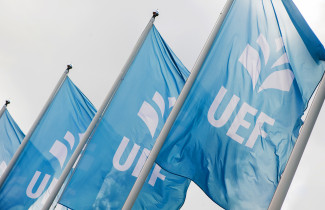The doctoral dissertation of Mehwish Anwer, MPhil, identified SRPX2 protein as a new biomarker of hypothalamic injury after traumatic brain injury.
Traumatic brain injury (TBI) refers to a brain injury due to an external mechanical force causing an impact to the head, which leads to the development of neurobiological, psychological, and social abnormalities. Remodelling of the extracellular matrix after TBI is crucial for tissue repair and attenuation of development of co-morbidities including posttraumatic epileptogenesis and endocrine dysfunction.
Sushi repeat-containing protein X-linked 2 (SRPX2) is a novel ligand of urokinase-type plasminogen activator receptor (uPAR), which is a key player in the proteolysis of the extracellular matrix and tissue remodelling after TBI. SRPX2 is associated with language development, synaptic plasticity, tissue remodelling and angiogenesis, and mutations in the human SRPX2 gene have been linked with Rolandic epilepsy and mental retardation. However, the cellular localization of SRPX2 in brain, the SRPX2-uPAR interaction, and the effect of acquired brain injury on SRPX2 expression is unknown.
The aim of Anwer’s thesis was to study SRPX2 expression in normal rodent, non-human primate and human brain, and its presence in plasma and cerebrospinal fluid. Next, it was studied whether SRPX2 modulates its effects through its receptor uPAR, and if the deficiency of uPAR or its other ligand, urokinase-type plasminogen activator (uPA), effects SRPX2 expression in brain. Essentially, the study investigated the acute and chronic effects of TBI on SRPX2 expression and consequently on the hypothalamo-pituitary axis.
The expression of SRPX2 protein in brain was identified using immunohistochemistry and in situ hybridization. The specificity of anti-SRPX2 antibody was confirmed by silencing SRPX2 in vitro using siRNA gene silencing technology. Plaur-/- and Plau-/- mice were used to identify the effect of genetic deficiency of uPAR and uPA on SRPX2 expression. Controlled cortical impact injury (CCI) was induced to examine the effect of traumatic brain injury on SRPX2 expression in wild type, Plaur-/- and Plau-/- mice. For a comprehensive spatiotemporal profile of SRPX2 protein in brain after TBI, lateral fluid-percussion injury (FPI) model was used in rats, and plasma SRPX2 levels were also quantified using western blot. Magnetic resonance imaging (MRI) and MnCl2-enhanced MRI (MEMRI) were used to study hypophyseal atrophy after lateral FPI in rats. Seizure susceptibility was assessed using pentylenetetrazol test and spatial learning and memory were evaluated with the Morris water-maze tests.
The results demonstrated that SRPX2 immunoreactive (ir) neurons are present in paraventricular, periventricular, and supraoptic nuclei of mouse, rat, monkey, and human hypothalamus. Dense SRPX2-ir projections from hypothalamic SRPX2-ir positive neurons travel towards the hypophysis terminating in neurohypophysis. SRPX2 protein colocalizes with oxytocin or vasopressin, and SRPX2 is secreted into plasma and CSF in rats and humans. Hypothalamic SRPX2 expression is unaffected by the genetic deficiencies in the urokinase-system or to CCI-induced TBI. However, lateral FPI-induced TBI in rats results in an acute reduction in SRPX2 expression in hypothalamus and plasma. Moreover, a lateral FPI-induced injury in rats leads to a chronic reduction in the neurohypophyseal volume, which relates to increased seizure susceptibility and poor performance in spatial learning tasks.
Overall, this study demonstrated that the phylogenetically conserved hypothalamic expression of SRPX2 protein is regulated independent of uPAR, and SRPX2 plasma levels can serve as a biomarker of an acquired brain injury. Furthermore, the lobe-specific hypophyseal volume can be utilized as a prognostic marker of post-TBI outcome.
The doctoral dissertation of Mehwish Anwer, Master of Philosophy, entitled Sushi repeat-containing protein x-linked 2: a novel hypothalamo-pituitary protein in pathophysiology of traumatic brain injury, will be examined at the Faculty of Health Sciences 0 13 April 2020. The Opponent in the public examination will be Professor Leszek Kaczmarek of Nencki Institute, Poland, and the Custos will be Professor Asla Pitkänen of the University of Eastern Finland.
Photo available for download at
https://mediabank.uef.fi/A/UEF+Media+Bank/36128?encoding=UTF-8

